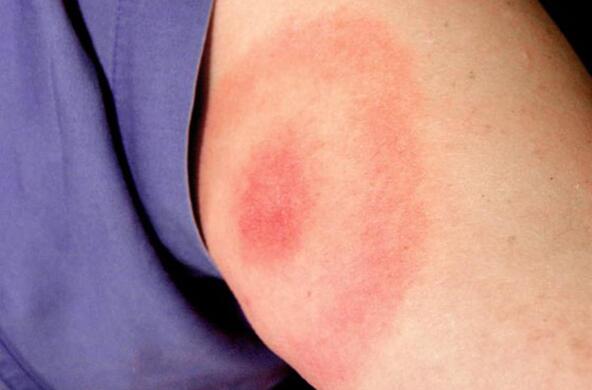When researchers at the Cary Institute of Ecosystem Studies began a recent study, they wanted to know the answer to a simple question: What effect do ticks have on the health of mice?After all, prior research had established that white-footed mice are the most prevalent and effective sources of the pathogens that cause Lyme disease and other serious ailments. Dutchess County has led the state in cases of Lyme, a disease with a potentially devastating impact on long-term health.
What the scientists discovered shocked them.
In a study to appear in the April edition of the prestigious scientific journal Ecology, the scientists found that ticks appear to have no negative impact on the health or lifespan of mice.
"The question was, what is out there in nature that might regulate these mice?" said Rick Ostfeld, a disease ecologist at Cary. "And the thought occurred to me a long time ago that in addition to predators, one possibility, oddly enough, might be the ticks."
But that wasn't the case.
The study examined mice during the warm-weather months and tracked winter survival rates. In both cases, the number of ticks on a mouse appeared to have no impact.
What's more, the study found that male mice seemed to fare better as more and more ticks piled onto them.
The scientists had plenty of data to work with. Over 16 years, they had captured more than 5,500 mice, tagged them so they could be tracked, and counted the ticks on them.
"We couldn't detect an effect, which is really surprising," said Michelle Hersh, the study's lead author, a former researcher at Cary and now a biology professor at Sarah Lawrence College in Yonkers.
When paired with other research that has shown mice don't fight off diseases effectively and don't remove ticks from their bodies, the study underscores the threat the small mammals play as wellsprings for Lyme disease, malaria-like maladies such as babesiosis and anaplasmosis, and the incurable and often deadly Powassan encephalitis.
Mice, Ostfeld said, “are by far the most important host in determining our risk of exposure to Lyme and other tick-borne diseases.”
Lyme cases
The Hudson Valley long has had some of the highest rates of Lyme disease in the nation.
According to the most recent data from the U.S. Centers for Disease Control and Prevention, Dutchess residents reported the highest number of confirmed cases of Lyme disease between 2007 and 2011 of any county in the state — 1,867 cases — and the ninth-highest total in the nation.
Ulster ranked second in the state and 12th nationally, with 1,695 confirmed cases over the same time period.
However, the CDC cautions that the actual numbers could be 10 times higher due to under-reporting, and that under-reporting is more likely to occur in highly endemic areas such as the mid-Hudson Valley.
The study
The scientists examined larval ticks: the youngest, smallest and most abundant of ticks.
Ticks are not born with Lyme disease. They must pick up the disease from their hosts.
Ticks take three bites in their lifetimes — as larval, then nymphal and finally as adult ticks.
The study, funded through a National Science Foundation grant, analyzed 16 years of field data at the Cary Institute. The data collection was also funded through grants from the foundation, ranging from $50,000 to $90,000 per year, as well as from Dutchess County. The money goes toward hiring employees to do the fieldwork, Ostfeld said.
Mice were trapped every three or four weeks, starting at the peak period of larval tick activity in late July and early August, until the end of the breeding season in November.
Each time a mouse was trapped, it was either marked with an ear tag — if it had no tag — or its tag number was recorded.
The scientists counted the number of larval ticks on each mouse upon the first capture and then at any subsequent recaptures, thereby creating capture histories for 5,587 individual mice.
The number of larval ticks varied widely, with some mice having more than 200. On average, the mice carried about 23 ticks.
The data from these observations were used to develop statistical models of how the number of ticks affect mouse survival.
“Estimating a survival rate for a wild animal population is challenging, since we generally cannot observe exactly when individual animals die,” Hersh said. “The closest data that we have are the capture histories, which are repeated observations of the same individuals over time.”
Using capture histories as the basis for extrapolating survival rates is a common method in animal population biology, Hersh said.
“Our estimates of survival probability incorporated distinct effects of each year, each individual, and, importantly, the maximum number of ticks that we counted on each individual during the annual larval peak in late July through early August,” Hersh said.
Ostfeld said the study does not explain why the mice seem unaffected by ticks.
But, he said, it may highlight the importance biodiversity can play in regulating the spread of infectious diseases.
“If we can’t rely on the ticks to hold this system in check,” he said, “then we need to look elsewhere. We think we can rely on predators. We should be looking more intensively at predators as control agents for these small rodents.”








